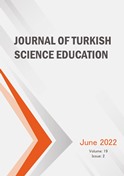Spectral Topographic Brain Mapping in EEG Recording for Detecting Reading Attention in Various Science Books
Keywords:
Brain mapping, EEG recording, power spectral density, reading attention, science bookAbstract
The electrical signals in the brain can be analysed by performing spectral topographic brain mapping via Power Spectral Density. This brain mapping analysis can show the brain’s different parts. Knowing dominant part(s) of the brain during reading activities enable to describe their attention levels when reading various books. The higher their attention levels are, the more information they receive during reading. The researchers used a qualitative approach with laboratory research using a small-group study of random behavior analysis method. The researchers recorded EEG data from 16 respondents (aged 18-22 years; eight males and eight females). EEG recordings took 15 minutes via a Simblee-based brain computer interface. The highest sampling rate was 200Hz, and the largest impedance was limited to 10Ω. EEG data with Power Spectral Density were analysed by using EEGLab Matlab-based software. Power Spectral Density was exploited to determine the high and low amplitude. The amplitude of this research was measured for the frequency range 15-18Hz (Beta1) showing the attention span. This study performed EEG recordings forreading tasks with different genres of books (academic science nonfiction book, general science nonfiction book, and science fiction book) to identify various attention cases. Attention measurement in reading can be used to detect students' reading skills in understanding science. The recording results showed that different genres of the books produced distinctive brain activities. The differences were based on the dominant part of the brain, amplitudes, and frequency patterns.
